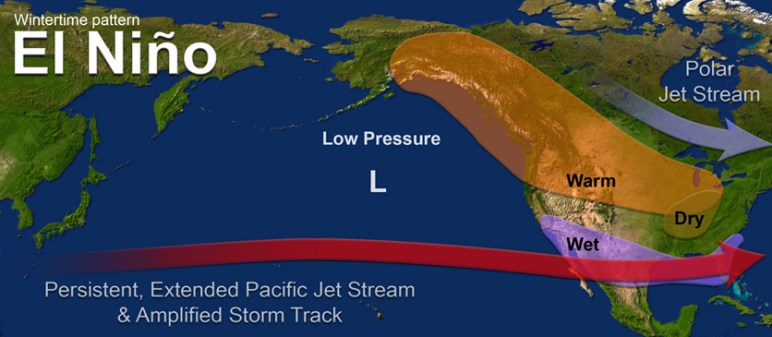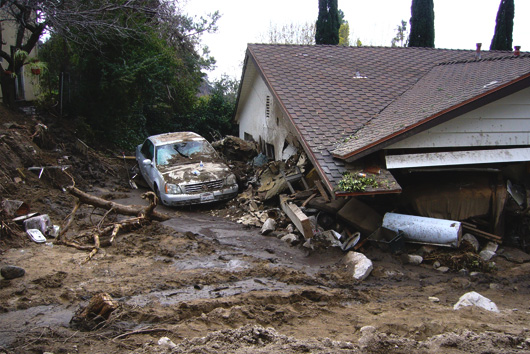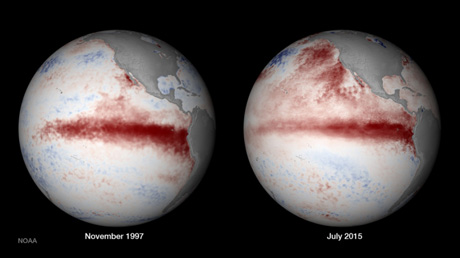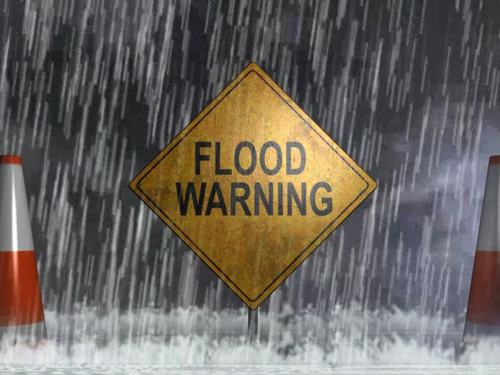El Niño: What it is and how to prepare
El Niño. We've all heard the term… it pops up every few years. But what exactly is El Niño? The term puts fear into those who have seen the worst. And yet, this year it might mean good news for drought-stricken states like California and Oregon. So... what should we expect? The El Niño-Southern Oscillation (ENSO) is the official name for periodic fluctuations in sea temperature near the equator. Every 2-7 years we see something like this developing, and we refer to it as El Niño ('little boy' in Spanish) when temperatures are higher than normal, and La Niña ('little girl) when they're lower. Now for the exciting news... The storm brewing for 2015 has the potential to be the strongest on record if the forecasts turn out to be true.. so the important thing is to BE PREPARED. |
|
Cities around the US are already reinforcing levees and sea walls. They're stock-piling sand bags to protect buildings and gravel bags for erosion control. They're outfitting storm drains with covers, grate guards and curb guards to prevent debris from creating blockages and flooding streets. We have lots of good ways to prepare for the storm season and protect your facility, as well as meet SPCC Compliance requirements for polluted stormwater runoff. (Sorry, bad weather doesn't let you off the hook when it comes to meeting pollution requirements.) Here's a lineup to help you prepare: Erosion Control Gravel bags and silt dikes are excellent for controlling erosion during heavy and frequent rainfall. If erosion is not prevented, people and property can incur significant damage. Water Diversion Divert water from crucial areas and prevent roof leaks from damaging your goods. Warehouses full of valuable merchandise and equipment should keep a simple drip diverter on hand to ensure that any surprise roof leaks don't spell disaster for your business. Sand bags can be on-hand for emergencies, and flexible berms can keep water away from sensitive areas like entries.
Drain Protection Protecting the drains from debris and sediment is essential to ensure storm drains are not contaminated by waste or clogged by debris. |
Stormwater Response Products |

 |
| Debris flow worsened by an influx of rain after prolonged dry weather |
Although we could really use the rain, this year's El Niño could be accompanied by ... well... let's call them "undesirable side effects".
No one knows precisely what will happen, but experts predict that El Niño has a 95% chance of coming this coming winter and inundating us with major rain fall. So.... we can rejoice that it replenishes groundwater, and bemoan the fact that that the rain could over-saturate our soil, flood our cities, and uproot fragile forests. We can only do what we can do. And that means, being ready.
Either way, it's better to be safe than sorry. We know the potential strength of what lies ahead. So... the take-away from this article is simply to to think ahead, hope for the best, but prepare for the worst. That way, whatever does come can be met with an army of preparation... preventing damage, huge repair expenses or government fines.
--------------------------------------------------------------------------------------------
References
- Climate Prediction Center/NCEP/NEW and the International Research Institute for Climate and Society (September 10, 2015). El Niño/Southern Oscillation (ENSO) Diagnostic Discussion . Retrieved from http://www.cpc.ncep.noaa.gov/products/analysis_monitoring/enso_advisory/ensodisc.html
- Kulash, Tara (July 31, 2015). Sea change: Here's what's wrong in the Pacific Ocean . Retrieved from http://www.oregonlive.com/environment/index.ssf/2015/07/blob.html
- Lindsey, Rebecca (September 16, 2014). U.S. temperature extremes and the polar jet stream . Retrieved from https://www.climate.gov/news-features/event-tracker/us-temperature-extremes-and-polar-jet-stream
- Miller, Craig (August 9, 2015). Possible Spoiler for El Niño: A ‘Battle of the Blobs'. Retrieved from http://ww2.kqed.org/science/2015/08/09/possible-spoiler-for-el-nino-a-battle-of-the-blobs/
- National Ocean Service. What are El Niño and La Niña? Retrieved from http://oceanservice.noaa.gov/facts/ninonina.html
- State Climate Office of North Carolina. Global Patterns – El Niño-Southern Oscillation (ENSO) . Retrieved from http://climate.ncsu.edu/climate/patterns/ENSO.html
- Swain, Daniel (September 2, 2015). Record-strength El Niño likely to bring wet winter to California in midst of worst drought on record. Retrieved from http://www.weatherwest.com/archives/3405
Recent Posts
-
Disinfecting Surfaces in the Era of Covid and EPA Registered Commercial Disinfectants and Viricides
The disinfection of surfaces at home, in public spaces, and in hospitals and clinics needs to be a …15th Jan 2023 -
Working with Inorganic Acids in the Laboratory: A Practical Guide
Working with Inorganic Acids in the Laboratory Acids are of great importance in the laboratory and a …5th Jan 2023 -
The Top 12 Drinking Water Contaminants
1.Lead- from older plumbing systems pre-1986, when lead pipes, solder, and components were banned. …14th Dec 2022


 Generally
speaking, an El Niño year brings LOTS of winter rain, especially in
the southern United States. Warm sea temperatures allow storm clouds to gather extra water, unleashing torrential downpours upon the unsuspecting public. The coasts usually get hit the hardest, but inland areas tend to experience the wildest temperature swings, so everyone gets a little extra chaos added to their lives.
Generally
speaking, an El Niño year brings LOTS of winter rain, especially in
the southern United States. Warm sea temperatures allow storm clouds to gather extra water, unleashing torrential downpours upon the unsuspecting public. The coasts usually get hit the hardest, but inland areas tend to experience the wildest temperature swings, so everyone gets a little extra chaos added to their lives. Back in 1997 (the current record year for giant El Niño events), the city of Sacramento, California received 32 inches of rain, about twice its average. Current predictions suggest that this year could be even worse, and significant planning will be necessary to ensure the best defense against the onslaught.
Back in 1997 (the current record year for giant El Niño events), the city of Sacramento, California received 32 inches of rain, about twice its average. Current predictions suggest that this year could be even worse, and significant planning will be necessary to ensure the best defense against the onslaught. Curb Guards
Curb Guards

